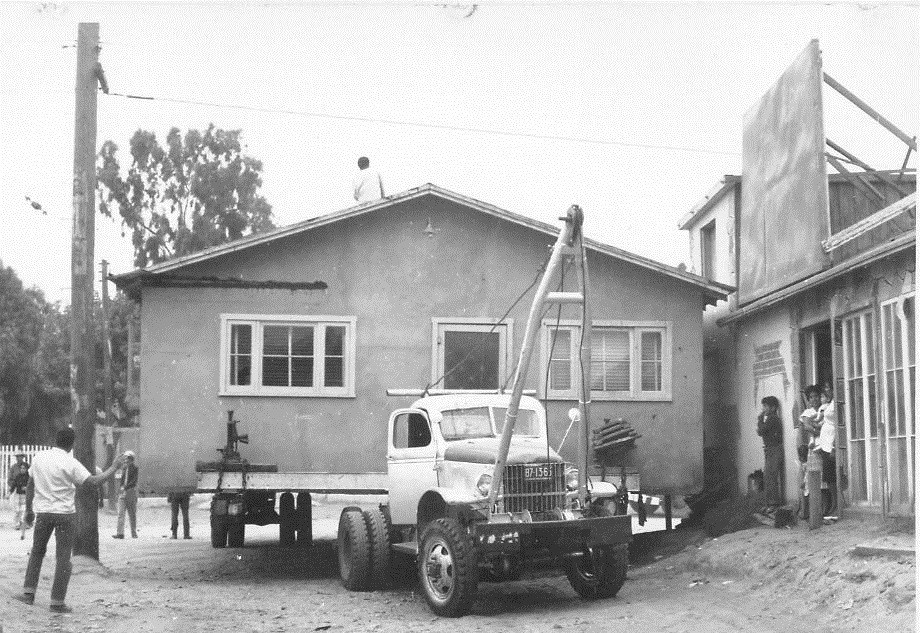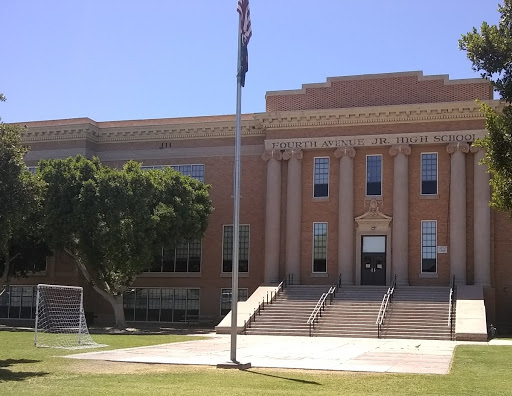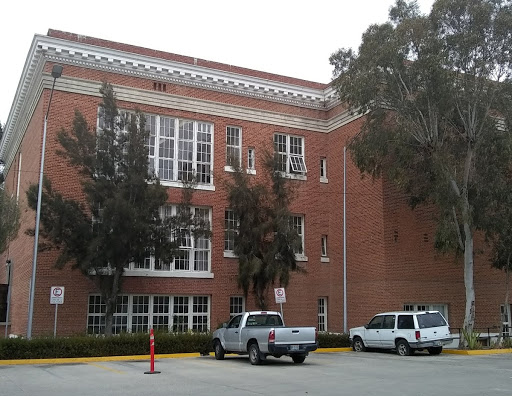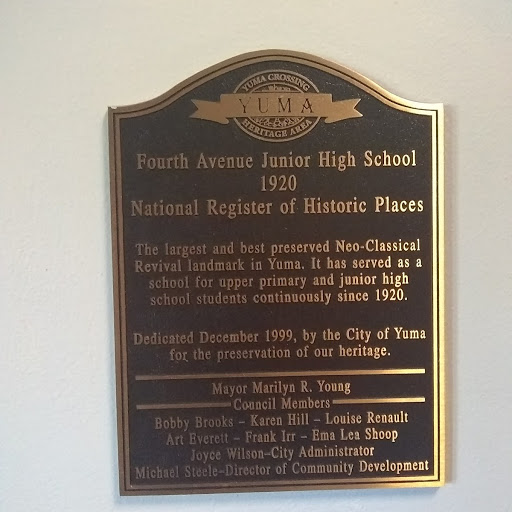|
Historic American Architecture Exported to Baja California
September/October 2018
By Maria Curry
 House being moved from San Diego to Tijuana (not dated). Courtesy of José Saldaña Rico |
 Fourth Street School in Yuma, Arizona. (1921). Windows have been replaced in the main façade. |
 Casa de la Cultura in Tijuana (1933) is a replica of the Yuma school. It retains its original windows and front door. |
 National Register plaque. Fourth Street High School, Yuma, Arizona. All photos by Maria Curry, except where noted otherwise. |
Mexico and the United States share a 2,680-mile-long border where many products are traded daily, including architecture. In Baja California, we can find hundreds of American manufactured houses that were moved from the U.S. since the 19th century, some of which have acquired historical significance and might be worth documenting.
The Mexican railroads, built between the 1870s and 1920s, used mostly American technology, construction materials, and designs. The Tecate depot, built in the Prairie Style by San Diego architect William H. Wheeler in 1919, could well qualify for the National Register of Historic Places if it were located in the U.S., based on its design, historic integrity, and association with significant people in California.
The St. Francis Hotel (1906) in downtown Tijuana is a good example of exportation of American architecture to Mexico. It had to be divided into two parts to be moved from Imperial Beach in the 1920s. It is now is eligible to be declared cultural patrimony in Baja California.
The now lost SS Catalina (1924), the last steamship in California, is another monument that traveled from one country to the other. It was recognized as a Los Angeles Historic-Cultural Monument and a California Historical Landmark, and was listed on the National Register. The SS Catalina was abandoned for 12 years in the Ensenada harbor, until it was scrapped in 2010, despite efforts by SOHO and other border preservationists to save it.
Many buildings used by U.S. Customs at the border, including the Spanish Revival style one at the San Ysidro port of entry (1933), are also listed on the National Register.
Contributing to Tijuana's architectural interest is an exact replica of a beautiful building on the National Register in Yuma, Ariz. That city's Fourth Street School dates to 1921. In Tijuana, its twin building, the Álvaro Obregón former school (1930) was designated cultural patrimony of Baja California. Each is a three-story brick structure in a Neo-Classical Revival style. The main façade features a projecting frontispiece flanked by a pair of long wings. Six two-story Ionic columns ornament the portico supporting an entablature. The main entrance is on the second floor, reached by a broad stairway.
The school in Tijuana was planned as an elementary school for girls. Later it became a middle school and then a high school. Since 1977, it has been known as Casa de la Cultura, where students take art, music, dance, painting, computer, and language classes. During World War II, the building served as a communications center for the Mexican Army, which supported the Allied nations of Europe and the U.S. Historians report that the telegrams that arrived were sent to San Diego with the help of a bicyclist. The building also hosted the Baja California Congress before finally becoming Casa de la Cultura.
These two buildings are identical except for their brick. The Yuma school is built of yellow bricks, while the Tijuana features red bricks. Another difference is the setting: the Yuma structure rises from flat terrain, while Tijuana's building hugs a hilltop with a view of the city. Of the two, the Yuma school has incurred more modifications: all the windows have been replaced and the interior adapted for changing school use. In Tijuana, the windows are original and the interior has undergone few changes.
American architecture has been exported to many countries since the 19th century and some examples should be considered for the National Register of Historic Places, if its thematic framework were to be expanded. A special National Register category for buildings constructed abroad could help us better understand American influence and history in the world.
|
2024
2023
2022
2021
2020
2019
2018
2017
2016
2015
|







